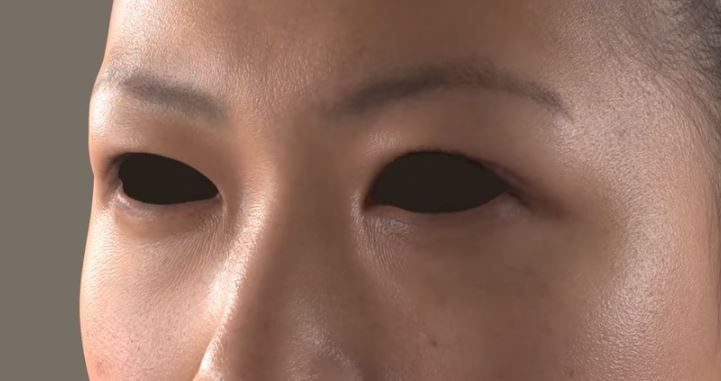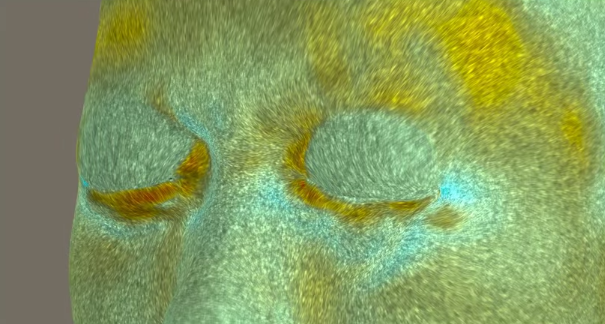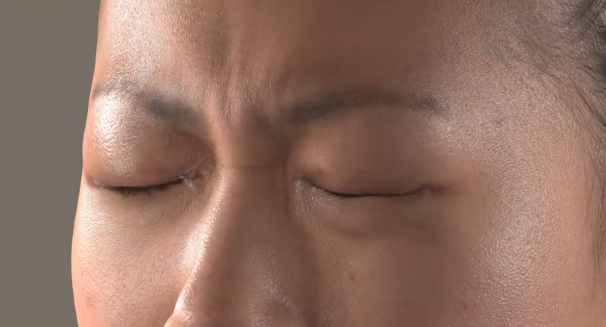Skin Rendering Technology: How To Make Animated Skin Look Incredibly Real

As technology becomes more advanced, animations are going to become more and more realistic, even when you thought they couldn’t seem more real. Newly developed skin rendering technology is allowing researchers to simulate skin movement on the screen in an incredibly realistic way.
Conducted by researchers at the USC Institute for Creative Technologies, the video describes how they are able to create the effects of skin microstructure — all the tiny details visible on the surface of your skin, including its epidermal layers, skin cell walls, pores, wrinkles, hairs, creases, and reflections — using a displacement map. They first scan in vivo skin samples that are stretching and compressing in different directions, identifying when the skin is rough and when it’s shiny. They note that skin becomes shinier when it’s stretched, and rougher when it’s compressed.
“Advances in measuring and simulating the scattering of light beneath the surface of the skin have made it possible to render convincingly realistic human characters whose skin appear to be fleshy and organic,” the authors wrote. “Today’s high-resolution facial scanning techniques (e.g. record facial geometry, surface coloration, and surface mesostructure details at the level of skin pores and fine creases to a resolution of up to a tenth of a millimeter.”



Yes, it’s a little creepy, but it’s also really cool. Watch the video to see how researchers are able to make skin stretch, wrinkle, crease, and compress realistically.
Published by Medicaldaily.com



























